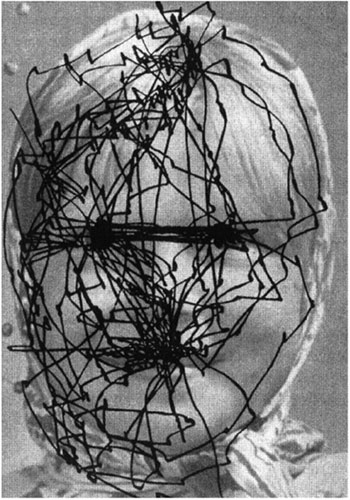
This Article From Issue
November-December 2006
Volume 94, Number 6
Page 569
DOI: 10.1511/2006.62.569
23 Problems in Systems Neuroscience. Edited by J. Leo van Hemmen and Terrence J. Sejnowski. xvi + 514 pp. Oxford University Press, 2006. $79.95.
Twenty-three Problems in Systems Neuroscience grew out of a symposium held in Dresden in 2000, inspired by an address given by the great geometrist David Hilbert 100 years earlier. In his speech, Hilbert commemorated the start of the 20th century by delivering what is now regarded as one of the most influential mathematical expositions ever made. He outlined 23 essential problems that not only organized subsequent research in the field, but also clearly reflected Hilbert's axiomatic approach to the further development of mathematics. Anticipating his own success, he began, "Who of us would not be glad to lift the veil behind which the future lies hidden; to cast a glance at the next advances of our science and at the secrets of its development during future centuries?"
I take seriously the premise represented in this new volume's title and preface that it is intended to "serve as a source of inspirations for future explorers of the brain." Unfortunately, if the contributors sought to exert a "Hilbertian" influence on the field by highlighting 23 of the most important problems in systems neuroscience, they have, in my opinion, failed. In failing, however, this book clearly illustrates fundamental differences between neuroscience (and biology in general) today and mathematics (and physics) in 1900.
Implicit in Hilbert's approach was the necessity for some type of formal structure underlying the problems at hand, allowing other investigators to understand their natures and then collaboratively explore a general path to their solutions. Yet there is little consistency in the form of the problems presented in this book. Instead, many (perhaps most) of the chapters are organized, at best, around vague questions such as "How does the cerebral cortex work?" At worst, the authors simply recount what is, in effect, a story promoting their own point of view.

From 23 Problems in Systems Neuroscience.
The very first chapter, by Gilles Laurent, is a good example of the latter. After starting with a well-worn plea for considering the results of the nonmammalian, nonvisual systems he works on, Laurent summarizes a series of experiments (many of them his own) supporting his now-well-known position regarding the importance of synchrony in neuronal coding. This chapter could have presented a balanced discussion of the important questions surrounding the nature of the neural code (as attempted in one chapter by David McAlpine and Alan R. Palmer and in another by C. van Vreeswijk), or even referenced and discussed some of the recently published papers questioning Laurent's interpretations. Instead, the author chose to attempt to convince us of his own particular solution.
I don't mean to pick on Laurent, as his chapter takes the standard form of symposia volumes; rather, his approach illustrates the general point that much of "systems neuroscience" (and neuroscience in general) revolves around this kind of storytelling. The chapter by Bruno A. Olshausen and David J. Field makes this point explicitly, suggesting that our current "story based" view of the function of the well-studied visual cortex depends on (1) a biased sampling of neurons, (2) a bias in the kind of stimuli we present and (3) a bias in the kinds of theories we like to construct.
In fairness, several chapters do attempt to address real problems in a concise and unbiased way. The chapter by L. F. Abbott, for example, positing, I think correctly, that the control of the flow of information in neural systems is a central (and unsolved) problem, is characteristically clear, circumscribed and open-minded. Refreshingly, Abbott's introduction states, "In the spirit of this volume, the point of this contribution is to raise a question, not to answer it. . . . I have my prejudices, which will become obvious, but I do not want to rule out any of these as candidates, nor do I want to leave the impression that the list is complete or that the problem is in any sense solved." Given his physics background, Abbott may actually understand enough about Hilbert's contribution to have sought its spirit. Most chapters, however, require considerable detective work, and probably also a near-professional understanding of the field, to find anything approaching Hilbert's enumeration of fundamental research problems.
In some sense I don't think the authors are completely to blame. Although many are prominent in the field, this lack of focus on more general and well-defined problems is, I believe, endemic in biology as a whole. Although this may slowly be changing, the question of how and even whether biology can move from a fundamentally descriptive, story-based science to one from which Hilbertian-style problems can be extracted may be the problem in systems neuroscience. A few chapters do briefly raise this issue. For example, in their enjoyable article on synesthesia, V. S. Ramachandran and Edward M. Hubbard identify their approach as not fashionable in psychology partly because of "the lingering pernicious effect of behaviorism" and partly because "psychologists like to ape mature quantitative physics—even if the time isn't ripe."
Laurenz Wiskott, in his chapter on possible mechanisms for size and shift invariance in visual (and perhaps other) cortices, raises what may be the more fundamental question as to whether biology is even amenable to the form of quantification and explanation that has been so successful in physics:
Either the brain solves all invariance problems in a similar way based on a few basic principles or it solves each invariance problem in a specific way that is different from all others. In the former case [asking] the more general question would be appropriate. . . . In the latter case, that is, if all invariance problems have their specific solution, the more general question would indeed be a set of questions and as such not appropriate to be raised and discussed here.
He then moderates the dichotomy by stating diplomatically, "There is, of course, a third and most likely alternative, and that is that the truth lies somewhere between these two extremes." Thus, Wiskott leaves unanswered the fundamental question about the generality of brain mechanisms or computational algorithms. As in mathematics 100 years ago, answering basic questions in systems neuroscience is tied up in assumptions regarding appropriate methodology. For Hilbert's colleagues, this was obvious and constituted much of the debate following his address; this fundamental issue, however, is only rarely discussed in biology.
Indeed, I want to be careful not to give the impression that these kinds of big-picture issues are given prominence in this volume—they are not. Rather, as is typical for books generated by these kinds of symposia, many of the chapters are simply filled with the particular details of a particular subject, although several authors should be commended for at least discussing their favorite systems in several species. However, given the lack of overall coordination, one wonders what impact this volume will have.
One way to gauge the answer is to look for evidence that the meeting presentations influenced the other participants. As an exercise, I summarized the major points and concerns each author raised in their chapters and then checked that list against the assumptions and assertions made by the other authors writing on similar subjects. The resulting tally, I would assert, provides very little evidence that these authors attended the same meeting—or perhaps even that they are part of the same field!
For example, the article titled "What Is Fed Back," by Jean Bullier, identifies, I think correctly, what will become a major shift in thinking about how brains are organized. As Bullier notes, there is growing evidence that the internal state of the brain has a much more profound effect on the way the brain processes sensory information than previously suspected. Yet this fundamental issue is scarcely mentioned in the other chapters, quite a few of which are firmly based on the old feed-forward "behaviorist" model of brain function. Similarly, the chapter by Olshausen and Field is followed immediately by a paper by Steven W. Zucker on visual processing that depends on many of the assumptions that Olshausen and Field call into question.
One hundred years ago, Hilbert's 23 questions organized a field. The chapters in this book make pretty clear that we are still very far away from having a modern-day Hilbert or even a committee of "experts" come up with a list of 23 fundamental questions that are accepted, or perhaps even understood, by the field of neuroscience as a whole.

American Scientist Comments and Discussion
To discuss our articles or comment on them, please share them and tag American Scientist on social media platforms. Here are links to our profiles on Twitter, Facebook, and LinkedIn.
If we re-share your post, we will moderate comments/discussion following our comments policy.